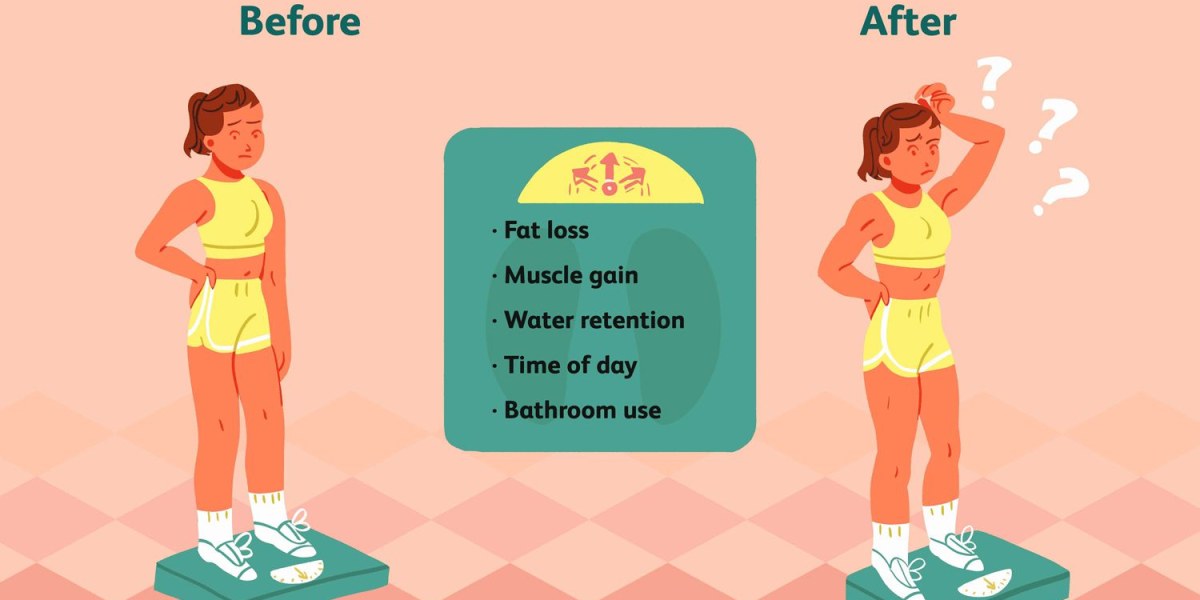Weight Loss can be a frustrating business. You have to eat healthily, start exercising and then wait. And wait, and wait and, sometimes, wait some more. Sometimes you see a little progress and, other times, nothing seems to be happening. So, if you’re exercising and you’re watching your calories, why isn’t the scale moving?
1. When Will You Start Losing Weight?
Short answer: There’s no firm answer to this question because there are so many elements involved with weight loss and each person will have a different experience. If you’ve reduced your calories by about 500 calories a day with diet and exercise and are consistent with that every day, you will theoretically lose about a pound a week. However, there are other factors involved in weight loss, some of which you can’t control including gender, metabolism, weight, age, fitness level, and hereditary factors. It’s hard to let your body respond in its own time, but that’s exactly what we have to do and it helps to:
- Focus on what you can control: You can control what you eat, how often you move, how you deal with stress and how well you take care of yourself each day. Doing the best you can with each of those will put you on the right track.
- Forget about what you can’t control: You can’t do anything about the things that may make it more difficult to lose weight, such as genetics, age, gender and body type. How much these things play a role in your success isn’t clear, but you know you can eat better and exercise more, two things that can help you lose weight.
- Ditch the scale: If getting on the scale makes you crazy, put it aside for a while or only weigh yourself every once in a while. A scale can’t tell you how much body fat you’re losing, so take your measurements, get your body fat tested or use other methods of tracking your progress. Find ways to encourage your success and that makes you feel good about what you’re doing.
- Focus on the results you are getting: Are you feeling better? Walking faster or longer? Getting stronger? Sleeping better? More energetic? That’s progress and there may be other health benefits to keep you motivated.
2. Why Can’t You Get Rid of Your Belly and Thighs?
Many people find that, even when they lose body fat, some areas never seem to slim down (i.e., the belly, hips, and thighs). If you’ve been doing a zillion crunches on your quest for six-pack abs, remember:
- Spot training doesn’t work: You can’t do crunches to reduce your belly fat or leg lifts to reduce cellulite around the thighs.
- To slim down, you have to lose body fat: Cardio, weight training, and diet are three crucial components to losing fat.
- Even losing body fat doesn’t guarantee perfection: Your body decides where and when it loses fat, not you. Do your best with your exercise and diet and allow your body to respond to that.
- Focus on the positive results: Maybe you’d rather lose an inch around your belly than, say around your forearm or calf, but progress is progress. If you’re losing inches, you’re on the right track and your body will eventually get around to those more stubborn areas if you’re consistent and patient.
3. You Don’t see Weight Loss…What Are You Doing Wrong?
Plateaus happen to everyone. When you do the same exercise over and over, your body adapts to it and your workout becomes less effective. If you’ve reached a plateau try these ideas:
- Increase your exercise intensity: Speed up your usual workout or try interval training to boost your endurance and calorie-burn.
- Try something new: Confuse your body by doing something you’ve never done—ride a bike or go for a swim to keep your muscles from becoming too accustomed to one exercise.
- Lift weights: If you’re not weight training, start with a basic strength training program 2-3 times a week. Adding muscle will increase your metabolism and help you lose body fat. If you are lifting weights, try changing your program regularly so that you challenge your muscles in different ways.
- Add another day of exercise: Even an extra 15-20 minutes a week can help you burn more calories.
4. Why Have You Been Exercising for Months and You Don’t See Weight Loss?
If you’re using a scale, may we again recommend that you set it aside and use other methods to track your progress? A scale can’t tell you what you’re losing or gaining. If you’re following a complete program, you may actually be gaining muscle rather than fat.
- Even if your weight goes up, you may still be losing body fat: Muscle is more dense than fat and it takes up less space. Pay attention to how your clothes fit–if you weigh more but have slimmed down, you’re on the right track.
- Take Your Measurements: Use a measuring tape to measure your chest, waist, hips, arms, and thighs. Every four weeks or so, re-take them to track your progress. If you’re losing inches, again, you’re on the right track.
- If you’ve gained weight and haven’t slimmed down, look at your diet: Some people compensate for exercise by eating more, thinking that exercise gives them permission to eat what they want. You may also be resting more after working out than you normally do, which can change how many calories you burn daily. Keep a journal of what you eat and how much activity you get to track what’s going in and what’s going out.
5. How Can You Keep Going When Haven’t Seen Results?
Focusing on weight loss is a sure way to get frustrated. Giving up on weight loss and focusing on other benefits may keep you going when times get tough. Just a few benefits of exercise include:
- More energy
- Better sleep
- More focus and concentration
- Increased circulation
- Reduced stress
- More confidence
If you’re frustrated with lack of results, plateaus or other weight-loss dilemmas, remember that losing weight takes time, patience and consistency. It can take months or years to see significant changes so, when you feel like quitting, remember that what you’re doing now will affect your future quality of life.




